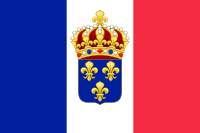Mid Third Age Cultures
Dunedain – descendants of Numenoreans, these are the ruling classes, i.e. nobility, priests and knights, of Gondor and Arnor.
Corsairs – these are Gondorians who left during the Kin-Strife and became part of the aristocracy of Umbar.
Adunaim – these are the Numenorean descendants of King’s Men who settled Umbar in the days prior to Gondorian conquest.
Black Numenoreans – these are the men of Numenorean descent who settled various realms-in-exile in Endor, and who practice the Dark Religion
Gondorians – these men are the common folk of Gondor. They are descended from the same Lebanor, Arhuivir and Kalanor stock as the Numenoreans albeit in isolation to the south and never benefited from the grace of the Ainur.
Haruze – these are the desert peoples who reside in the lands of Near Harad south of Gondor. They are generally nomadic but also have significant urban centers along trade routes where strong merchant classes thrive. They are also warlike at times.
Bellakaze – These are the peoples of the realms of Bellakar. They are very similar, racially, to the Haruze, but their culture and genotype received notable Numenorean influence, making them a distinctive group.
Urban Apysani – These people dwell in the cities of Greater Harad and are cousins to the Haruze and Bellakaze peoples but with some important differences. The city folk engage in trade and are thought to be more civilized than their rural counterparts.
Rural Apysani – These people either live as farmers or nomads in Greater Harad.
Desert nomads – There is overlap with the other groups of Harad listed above, however there are certain groups who are exclusively nomadic tradesmen/warriors/slavers/etc
Variags – These are the warlords of the dusty and rugged lands of Khand, a civilized but dark and warlike tribe which often asserts dominance over the lands south and east of Gondor.
Asdriags – These are culturally similar to Variags but a bit closer to the seminomadic traditions which the Variags emerged from in the early Third Age.
Eriadorans – In theory, an Eriadoran is any non-Dunadan who lives in Eriador. So this can refer to the Eriadoran peasants and merchants of Arnor, who derive from a mainly Lebanor base (with some Arhuivir blood). But there are also newcomers of Kalanor stock – Northmen migrating from Rhovanion – who also could be considered Eriadorans, though in culture they still retain much in common with Northmen farther east.
Rhudaurim – Though Rhudaur was once controlled by Dunedain, it is currently a client state of Angmar. Its people are of primarily Arhuivir stock, akin to the more southerly Daen tribes, but also some Milevir blood has crept in with migrations.
Dunlendings – These are the men of Dunfearan, a group of relatively pure Arhuivir who are known as an unpredictable presence as their homelands lie between Gondor and Arnor. Dunmen are not as civilized as the other men inhabiting the West and are known as strong warriors and talented craftsmen.
Clansmen – Racially, these men are almost identical to Dunmen. The important difference is that they inhabit the lands of the
Evathrum – The horse-Kalanor of the steppes of Rhovanion. They are known as reliable allies of Gondor, and of all of the non-Numenoreans they are most like them in temperament, as they are orderly, honorable and enterprising. They have less trust for civilization, however, and prefer to live in close-knit clan units, thus towns and villages can be encountered in their lands but few cities.
Woodmen – The men of Mirkwood live in towns in the trees and are generally closed to outside interaction lest they face persecution. Of all the men in the West, they are the most akin to the Silvan Elves who live in harmony with the forest. They do not clear the forest but rather live off its rather limited bounty. As a consequence, they are sparser in population than other Kalanor groups.
Dorwinrim – These are the civilized peoples of the East. They seem to have emerged from a cultural synthesis of the old, warlike Szreldor cultures and the moderating influence of the West. They derive from Lebanor stock, but also Easterling and Milevir contributions.
Forodrim – These races are of Milevir stock and are taiga and tundra wanderers who are even more adapted to sparse population and cold than the Northmen. They are somewhat fearful of the other Men of the West as they perceive them to be conquest-hungry. Sometimes they are persuaded to aid the Angmarim.
Easterlings – The nomads of the eastern steppes are from a common origin as the men of the West but they live on the steppes in fully nomadic lifestyles with few exceptions and thus are culturally alien and often possessed of a nihilistic urge to attack and destroy the civilization. This urge has not been helped by their bloody history of conflicts with Gondor and the Northmen in the Third Age.
Notes on Races
Lebanor, Kalanor and Arhuivir are based on typically Western (in the sense of Western civilization) Aryans. They are somewhat distinctive in terms of phenotype frequency and regional cultural variation. That is, Lebanor are often raven haired and tend more toward solemn demeanors. Arhuivir tend toward middling pigments, with brown or rusty or sandy hair predominating. Kalanor are often fair, with blond, red or light brunette hair. If one were to compare these to the peoples of

No comments:
Post a Comment
Note: Only a member of this blog may post a comment.